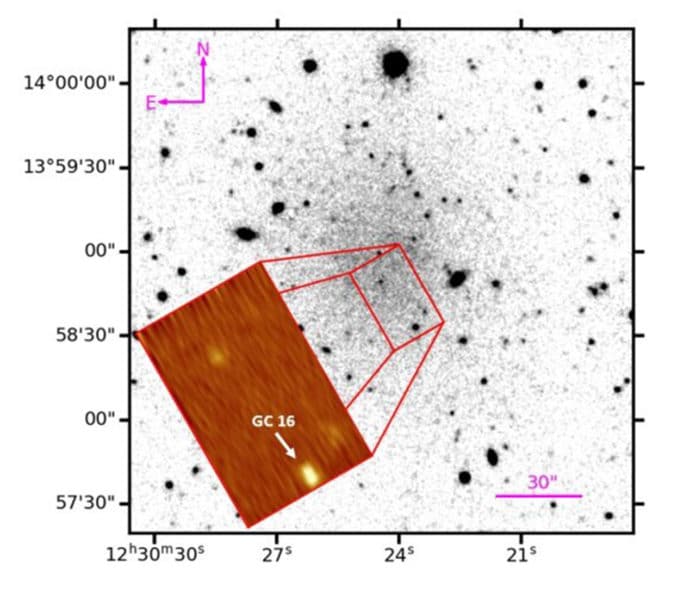Using Keck Cosmic Web Imager (KCWI), astronomers probed an ultra-diffuse galaxy (UDG) known as VCC 1287 to investigate its nature. The details offer information on the galaxy’s mass and stellar kinematics.
The galaxy VCC 1287 is located some 50 million light-years away, with a mass of about 4.5 billion solar masses. It is assumed to be associated with the Virgo cluster and its globular cluster (GC) system.
A team of astronomers drove by Jonah S. Gannon of the Swinburne University, Australia, investigated VCC 1287. They examined the data from the KCWI instrument mounted on the Keck II telescope at the W. M. Keck Observatory to look at heavenly kinematics of VCC 1287 and to put further constraints on the mass of this galaxy.
They found that VCC 1287 has a stellar recessional velocity of about 1,116 km/s. It means it is associated with the Virgo cluster and with its globular cluster system reported by previous observations. Moreover, this association formalizes its large size and its status as a UDG.
According to the study, the galaxy has a stellar velocity dispersion of about 19 km/s. It means it has a dynamical mass of approximately 1.11 billion solar masses and the mass-to-light ratio at a level of 13 within the galaxy’s half-light radius.
Authors noted, “This places VCC 1287 slightly above the well-established relation for normal galaxies, with a higher mass-to-light ratio for its dynamical mass than normal galaxies.”
The astronomers estimated the halo mass of VCC 1287 from its globular cluster system. It was found that its halo mass is around 110 billion solar masses. This, according to the authors of the paper, suggests that VCC 1287 likely resides in a cored or low concentration dark matter halo.
Astronomers concluded, “Taking into account all the new results, tidal effects or stellar feedback could have played a key role in the formation of VCC 1287.”
Journal Reference:
- Jonah S. Gannon, On the Stellar Kinematics and Mass of the Virgo Ultra-Diffuse Galaxy VCC 1287. DOI: 10.1093/mnras/staa1282
